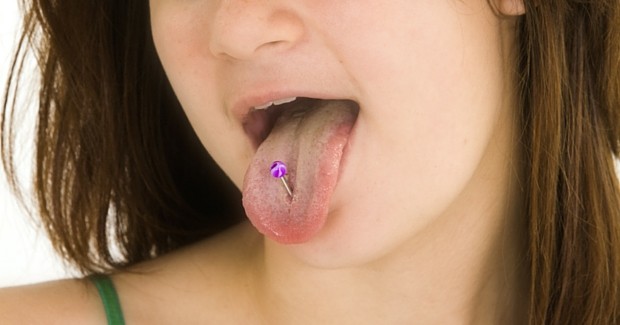 Oral piercings have been around for years. It’s a trend that is still very popular, particularly among young adults. One study reported that close to one fifth of young adults has had at least one type of piercing in or around their mouth. People get oral piercings for a variety of reasons, but shockingly, most of them are unaware of the dangers associated with mouth piercings.
Oral piercings have been around for years. It’s a trend that is still very popular, particularly among young adults. One study reported that close to one fifth of young adults has had at least one type of piercing in or around their mouth. People get oral piercings for a variety of reasons, but shockingly, most of them are unaware of the dangers associated with mouth piercings.
The tongue, lips and cheek are the most common sites for oral piercings. Several studies have been conducted to examine the harmful side of oral piercings. One study showed that 87.83% of piercings had some form of early complication. The most prevalent complications were swelling and bleeding at the piercing sites, followed by dental defects, such as fractured/chipped teeth and receding gums. The prevalence of dental defects is greater for tongue piercings than for lip piercings, and the incidence of gingival recession appears similar for both tongue and lip piercings. Other studies have shown that oral piercings can lead to an increased concentration of periodontal pathogenic bacteria at the pierced site, leading to increased periodontal disease. They have also been linked to an increased incidence of Candida Albicans (a fungus, yikes!) colonization.
Severe, even life-threatening, complications can also arise from oral piercings such as:
- Hemorrhage
- Nerve damage
- Infection and swelling that can lead to airway obstruction
- Infectious diseases (e.g. HIV, hepatitis, tetanus)
- Ludwig’s angina
- Cerebral abscess
- Endocarditis
While getting oral piercings can be fashionable and a way of showing individuality, people must use caution when getting them. Ensure the place you go to get the piercing is a reputable shop. Proper sterilization and infection control are paramount when choosing a piercer. Also, pay attention to the site you choose to get pierced; some areas are more prone to recession or chipping/cracking teeth. And if you do decide to get one, try not to play with the piercing – many people who have oral piercings report that playing with the piercing caused dental defects. Bottom line is DO YOUR HOMEWORK and ensure you are informed of the potential local and systemic risks of the piercing.